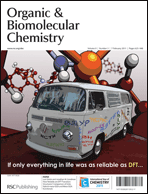This latest contribution to the debate over the origin of catalysis in the chorismate mutase enzyme may bring an end to the controversy surrounding the nature of its transition state.
Adrian Mulholland and collaborators at the University of Bristol have used quantum and molecular mechanics to model the rearrangement of chorismate to prephenate in Bacillus subtilis chorismate mutase and aqueous solution. The chorismate mutase enzyme is a favourite model for theories of biological catalysis, but there is still disagreement on exactly how it occurs.
The team found that a slightly different reaction path was followed in each environment and that there were differences in the transition state structures between water and the enzyme. A significantly more stable transition state was formed in the enzyme. These results are in opposition to previously published work which suggested that catalysis in the enzyme does not involve transition state stabilisation at all, but rather is due to the formation of a reactive conformation of the substrate.
The referees were impressed with the careful and thorough nature of this study – read the full article online here, it’s free until the end of February.
Analysis of chorismate mutase catalysis by QM/MM modelling of enzyme-catalysed and uncatalysed reactions
Frederik Claeyssens, Kara E. Ranaghan, Narin Lawan, Stephen J. Macrae, Frederick R. Manby, Jeremy N. Harvey and Adrian J. Mulholland
Org. Biomol. Chem., 2011, Advance Article
DOI: 10.1039/C0OB00691B











